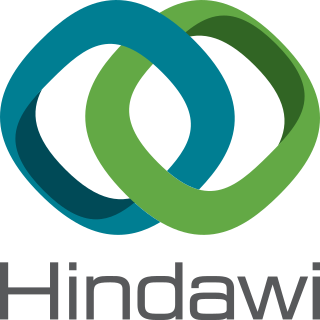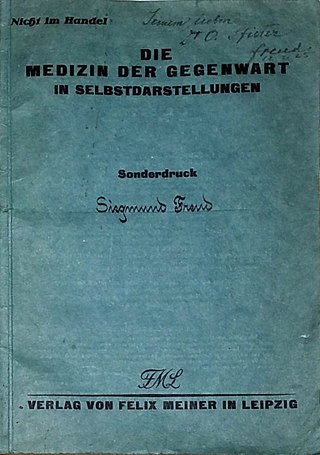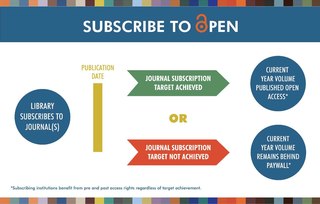
Academic publishing is the subfield of publishing which distributes academic research and scholarship. Most academic work is published in academic journal articles, books or thesis. The part of academic written output that is not formally published but merely printed up or posted on the Internet is often called "grey literature". Most scientific and scholarly journals, and many academic and scholarly books, though not all, are based on some form of peer review or editorial refereeing to qualify texts for publication. Peer review quality and selectivity standards vary greatly from journal to journal, publisher to publisher, and field to field.

Open access (OA) is a set of principles and a range of practices through which research outputs are distributed online, free of access charges or other barriers. With open access strictly defined, or libre open access, barriers to copying or reuse are also reduced or removed by applying an open license for copyright.

Self-archiving is the act of depositing a free copy of an electronic document online in order to provide open access to it. The term usually refers to the self-archiving of peer-reviewed research journal and conference articles, as well as theses and book chapters, deposited in the author's own institutional repository or open archive for the purpose of maximizing its accessibility, usage and citation impact. The term green open access has become common in recent years, distinguishing this approach from gold open access, where the journal itself makes the articles publicly available without charge to the reader.
Citation impact or citation rate is a measure of how many times an academic journal article or book or author is cited by other articles, books or authors. Citation counts are interpreted as measures of the impact or influence of academic work and have given rise to the field of bibliometrics or scientometrics, specializing in the study of patterns of academic impact through citation analysis. The importance of journals can be measured by the average citation rate, the ratio of number of citations to number articles published within a given time period and in a given index, such as the journal impact factor or the citescore. It is used by academic institutions in decisions about academic tenure, promotion and hiring, and hence also used by authors in deciding which journal to publish in. Citation-like measures are also used in other fields that do ranking, such as Google's PageRank algorithm, software metrics, college and university rankings, and business performance indicators.

Hindawi is a publisher of peer-reviewed, open access, scientific journals currently active in scientific, technical, and medical (STM) literature. It was founded in 1997 in Cairo, Egypt, and purchased in 2021 for $298 million by John Wiley & Sons, a large US-based publishing company. The publisher has been classified as a predatory publisher. After almost 10,000 article retractions in 2023, Wiley announced that it would cease using the Hindawi brand.
Dove Medical Press is an academic publisher of open access peer-reviewed scientific and medical journals, with offices in Macclesfield, London, Princeton, New Jersey, and Auckland. In September 2017, Dove Medical Press was acquired by the Taylor and Francis Group.
A hybrid open-access journal is a subscription journal in which some of the articles are open access. This status typically requires the payment of a publication fee to the publisher in order to publish an article open access, in addition to the continued payment of subscriptions to access all other content. Strictly speaking, the term "hybrid open-access journal" is incorrect, possibly misleading, as using the same logic such journals could also be called "hybrid subscription journals". Simply using the term "hybrid access journal" is accurate.
Delayed open-access journals are traditional subscription-based journals that provide free online access upon the expiry of an embargo period following the initial publication date.
An open-access mandate is a policy adopted by a research institution, research funder, or government which requires or recommends researchers—usually university faculty or research staff and/or research grant recipients—to make their published, peer-reviewed journal articles and conference papers open access (1) by self-archiving their final, peer-reviewed drafts in a freely accessible institutional repository or disciplinary repository or (2) by publishing them in an open-access journal or both.
Academic journal publishing reform is the advocacy for changes in the way academic journals are created and distributed in the age of the Internet and the advent of electronic publishing. Since the rise of the Internet, people have organized campaigns to change the relationships among and between academic authors, their traditional distributors and their readership. Most of the discussion has centered on taking advantage of benefits offered by the Internet's capacity for widespread distribution of reading material.

PeerJ is an open access peer-reviewed scientific mega journal covering research in the biological and medical sciences. It is published by a company of the same name that was co-founded by CEO Jason Hoyt and publisher Peter Binfield, with initial financial backing of US$950,000 from O'Reilly Media's O'Reilly AlphaTech Ventures, and later funding from Sage Publishing.
This is a summary of the different copyright policies of academic publishers for books, book chapters, and journal articles.

Predatory publishing, also write-only publishing or deceptive publishing, is an exploitative academic publishing business model that involves charging publication fees to authors while only superficially checking articles for quality and legitimacy, and without providing editorial and publishing services that legitimate academic journals provide, whether open access or not. The rejection rate of predatory journals is low, but seldom zero. The phenomenon of "open access predatory publishers" was first noticed by Jeffrey Beall, when he described "publishers that are ready to publish any article for payment". However, criticisms about the label "predatory" have been raised. A lengthy review of the controversy started by Beall appears in The Journal of Academic Librarianship.
The following is a timeline of the international movement for open access to scholarly communication.

An offprint is a separate printing of a work that originally appeared as part of a larger publication, usually one of composite authorship such as an academic journal, magazine, or edited book. Offprints are used by authors to promote their work and ensure a wider dissemination and longer life than might have been achieved through the original publication alone. They may be valued by collectors as akin to the first separate edition of a work and, as they are often given away, may bear an inscription from the author. Historically, the exchange of offprints has been a method of correspondence between scholars.
Project DEAL is a consortium-like structure spearheaded by the German Rectors' Conference, on behalf of its fellow members in the Alliance of Science Organizations in Germany and tasked with negotiating nationwide transformative open access agreements with the three largest commercial publishers of scholarly journals for the benefit of all German academic institutions, including universities, research institutes, and their libraries. Through each of these agreements, the consortium aims to secure immediate open access publication of all new research articles by authors from German institutions, permanent full-text access to the publisher's complete journal portfolio, and fair pricing for these services according to a simple cost model based on the number of articles published.
Plan S is an initiative for open-access science publishing launched in 2018 by "cOAlition S", a consortium of national research agencies and funders from twelve European countries. The plan requires scientists and researchers who benefit from state-funded research organisations and institutions to publish their work in open repositories or in journals that are available to all by 2021. The "S" stands for "shock".

Diamond open access refers to academic texts published/distributed/preserved with no fees to either reader or author. Alternative labels include platinum open access, non-commercial open access, cooperative open access or, more recently, open access commons. While these terms were first coined in the 2000s and the 2010s, they have been retroactively applied to a variety of structures and forms of publishing, from subsidized university publishers to volunteer-run cooperatives that existed in prior decades.
The economics of open science describe the economic aspects of making a wide range of scientific ouputs to all levels of society.

Subscribe to Open (S2O) is an economic model used by peer-reviewed scholarly journals to provide readers with open access (OA) to the journal’s content, without charging costs to authors. S2O converts journals that have a traditional subscription model to open access.









